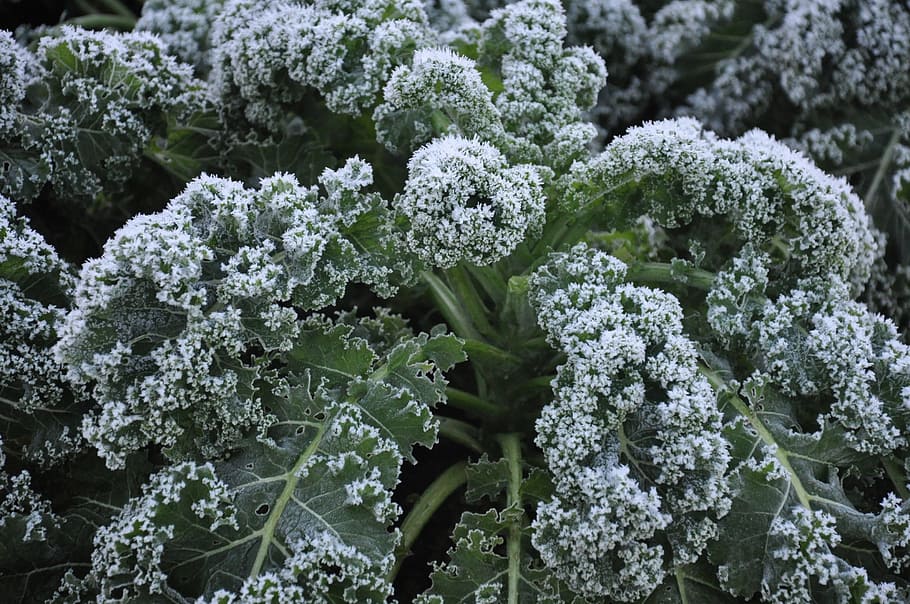Frost and Freeze Protection for Vegetables
go.ncsu.edu/readext?688740
en Español / em Português
El inglés es el idioma de control de esta página. En la medida en que haya algún conflicto entre la traducción al inglés y la traducción, el inglés prevalece.
Al hacer clic en el enlace de traducción se activa un servicio de traducción gratuito para convertir la página al español. Al igual que con cualquier traducción por Internet, la conversión no es sensible al contexto y puede que no traduzca el texto en su significado original. NC State Extension no garantiza la exactitud del texto traducido. Por favor, tenga en cuenta que algunas aplicaciones y/o servicios pueden no funcionar como se espera cuando se traducen.
Português
Inglês é o idioma de controle desta página. Na medida que haja algum conflito entre o texto original em Inglês e a tradução, o Inglês prevalece.
Ao clicar no link de tradução, um serviço gratuito de tradução será ativado para converter a página para o Português. Como em qualquer tradução pela internet, a conversão não é sensivel ao contexto e pode não ocorrer a tradução para o significado orginal. O serviço de Extensão da Carolina do Norte (NC State Extension) não garante a exatidão do texto traduzido. Por favor, observe que algumas funções ou serviços podem não funcionar como esperado após a tradução.
English
English is the controlling language of this page. To the extent there is any conflict between the English text and the translation, English controls.
Clicking on the translation link activates a free translation service to convert the page to Spanish. As with any Internet translation, the conversion is not context-sensitive and may not translate the text to its original meaning. NC State Extension does not guarantee the accuracy of the translated text. Please note that some applications and/or services may not function as expected when translated.
Collapse ▲The clear skies and calm winds predicted for this weekend will likely lead to freeze or frost conditions in North Carolina. Sunday morning, May 10, 2020, the temperature is predicted to drop into the 30s across the state and even lower in low-lying rural areas. Not only are daily low temperature records likely to be broken, but this will tie the latest spring freeze for Raleigh, May 10th (31 ºF) and set a new record for Greensboro where the current record is May 8th (32 ºF).
If water within or between the plant cells freeze, this can result in damage to plant tissue. Cold damage results from the actual temperature and the duration of that temperature. Some plants are more resistant to freeze damage.
Frost occurs at temperatures from 31-33 ºF and will result in damage or destruction of the foliage of warm season plants like beans, corn, cantaloupe, cucumbers, eggplant, okra, southern peas, peppers, potatoes, sweet corn, sweetpotatoes, squash, tomatoes, and watermelon.
Temperatures below 26-31 ºF, cause a hard frost or freeze. Some cool season crops will tolerate a temperature dip to these temperatures for a limited period of time. These include broccoli, cabbage, cauliflower, chard, English peas, lettuce, mustard, onion, radishes and turnips. The plant may survive, however, the foliage may be damaged resulting in a lower yield.
Some cool season crops like Brussels sprouts, beets, collards, kale, parsley, and spinach will survive even If the temperature drops below 26 ºF for an extended period of time.
To protect your plants:
- Ensure they are well watered. Drought stress are more vulnerable to cold damage. In addition, moist soil retains heat longer and releases it slowly during the cold event.
- Do not cultivate the soil just prior to a frost or freeze since cultivation can damage plant roots increasing plant stress, result in loss of soil moisture, and allow cool air to penetrate deeper into the ground.
- Cover plants
-
- Frost cloth – rated by the degrees of protection it provides
- Waxed paper cups – for overnight protection of small transplants
- Carefully monitor the temperatures under the covers and remove before temperatures rise too high.
-
- In extreme cases, newly transplanted tomatoes and peppers, can be carefully dug up and brought inside to avoid the freeze and then replanted when the danger is past.
Select a strategy and prepare ahead of time to minimize frost damage.
This article originally written for vegetable growers, has been edited by Lucy Bradley for home gardeners.
For more information see:



